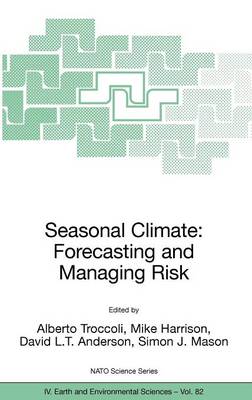NATO Science Series IV
1 primary work
Book 82
Seasonal Climate: Forecasting and Managing Risk
Originally formed around a set of lectures presented at a NATO Advanced Study Institute (ASI), this book has grown in scope and in aspiration to become organised and presented rather more as a textbook than as a standard “collection of proceedings”. The lack of a unified reference textbook covering both the science of seasonal to interannual predictions and real-world uses of the forecasts was the main driver for the effort placed into writing an amalgamated introductory book, each chapter of which has been thoroughly peer reviewed. Throughout, our objective has been to present a book accessible to people from diverse disciplines, both scientific and social, interested in this intriguing and fast emerging area.
The fascination of seasonal climate forecasting, for which El Niño forecasting provides the prime basis, derives from its multi-faceted character. Not only does it pose exciting new scientific challenges for the climate community, but it is linked naturally to a great variety of key practical concerns, from security related issues, such as water resource management, food security, and disaster prediction and prevention, to health planning, agriculture management, energy supply, and tourism, to name but a few. Seasonal to interannual climate forecasts are indeed becoming a most important element in certain policy/decision making systems, not least within the contexts of sustainable development and of climate change adaptation.
